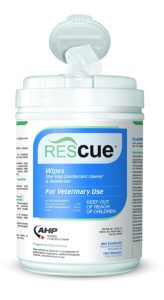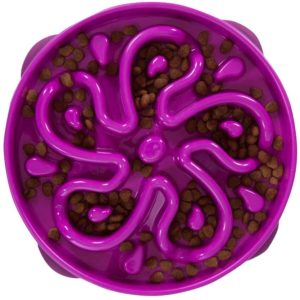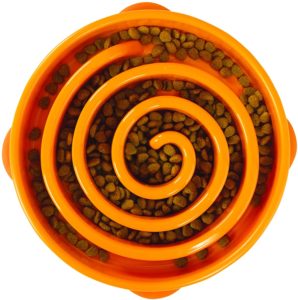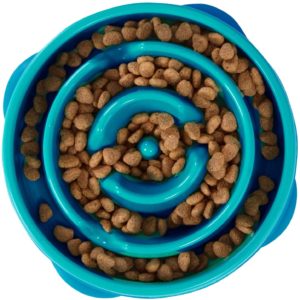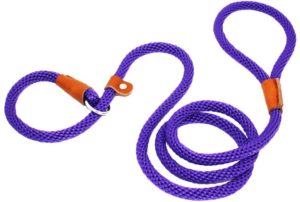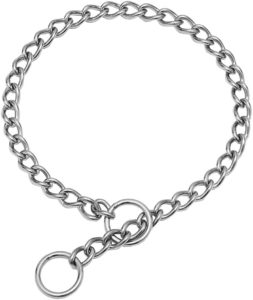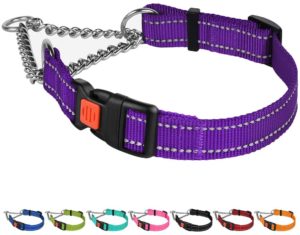Bringing a puppy home can be exciting and stressful at the same time. I hope the following information can help you reduce the stress part by being prepared to welcome a new puppy or dog.
Making sure your home is disinfected should be a main priority. Especially for PARVO! I would recommend using Rescue. It’s a peroxide based one-step disinfectant cleaner. Kills viruses quicker than bleach and penetrates organics. I would recommend getting the “ready to use” and not the gallon concentrate, unless you have a lot of areas to clean. I like to carry the wipes in my car for the steering wheel, handles and pedals. I order mine from Animal Revival Health and Amazon.
Crates and Bedding
When crate shopping, keep in mind that the crate should be small in the beginning. Size small and medium are the best. Most medium size crates come with a removable divider. The idea is to create enough space for the puppy to be comfortable, without having too much extra room. Having just enough room will encourage your puppy to hold their bowels in between potty breaks. When your puppy has extra space they are more likely to potty in the crate.
There is an endless amount of beds to choose from. I recommend having a few. Since these dogs have a heavy coat, be careful when choosing a bed for the crate, they may get too hot. You will find that they like cold hard surfaces like tile, cement, wood floors etc. You may need to put a fan by the crate depending on the time of year and temperature you like to keep your home.
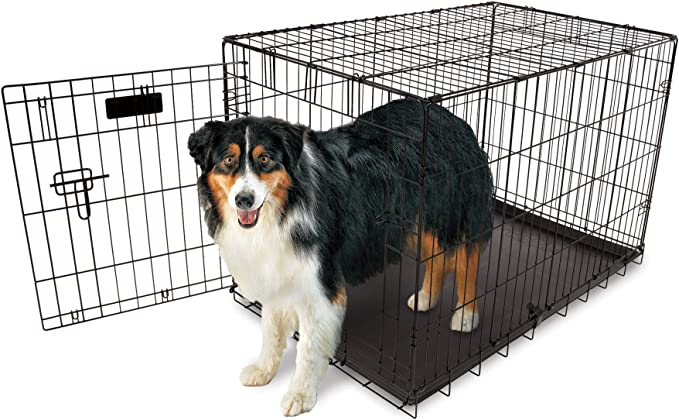
Slow Feeder Bowl
I would recommend getting a “slow feeder bowl”. These are great for preventing the puppy from inhaling their food. It also teaches them problem solving and patience. There are lots of great slow feeders to choose from. I find mine at Marshall’s, TJ Max and Amazon.
Collar and Leashes
A collar should only be used for identification purposes, not to attach a leash to. I recommend going with a “slip lead”, show chain or martingale.
NO HARNESSES!
Here is an exert from an article written by Donna Harris:
- A dog harness is NOT a substitute for a collar. Humans worry about the Dog getting away so use a harness for a walk. Two problems here Humans. 1) If your Dog gets off the leash I should be trained enough to stay. If I don’t listen – I’m not trained. 2) Why are you worried about your Dog running away?! That’s not trusting your animal. That’s falling victim to human nature.
- A Harness encourages pulling! By design, the harness encourages pulling. Dogs are not comfortable leading and pulling on the walk – the main reason why they are nervous, excitable, and barking.
- Timing is always going to off. A Dog is able to be walk with a human, and can communicate simply by a wrist gesture on the leash. With a harness connected by the shoulders, the signal that you want the Dog to ‘do’ something is connected to the shoulder and is delayed to the dog. More often than not, the Dog sees this as a sign to PULL and will resist the tension and PULL. With a collar the gesture is right to the neck and I am aware RIGHT AWAY what to do next.
- Communication isn’t clear. With a signal going to the shoulders with a harness, the dog will feel the tension and resist it. This is not the clear communication. Murky at best. With a collar – a STRONG VOICE command FIRST followed by a wrist gesture is much more clear communication. I will know what you want.
- A harness is not more secure. A harness is not as ‘secure’ as people believe. Securing a collar to your dog is very simple. For “Big Dogs”, there is a ‘two finger’ rule. Two fingers should fit below the dogs collar. With a smaller dog, one finger may suffice. In all cases, your Dog’s collar should not go over his head.
- Less control over the dog. In fact it is harder to control your dog with a harness than with a collar. As a collar is connected to your dogs head it is easier to control and prevent any danger that may happen. With a harness controlling the head of your dog is not possible.
- Subtle messages are not sent to your dog (control your dog with your wrist). We mentioned earlier with wrist control it is possible to control (lead) your dog with a collar. Sit, Down, Heel, Slow Down, Stop, Left, and Right can all be done with wrist control. With a strong voice command, your Dog will eventually and not need a voice command at all.
- Inhibits you being a pack leader. Look when you see a dog or dogs on a harness. Normally, they are all tangled barking like crazy and in front of the Human. As a Dog, I have never seen this situation any different, especially with small dogs. Being a pack leader means leading the animals. Never behind. Seeing people tangled up with 3 Yorkies barking their heads off is not a good look.
- Encourages distractions. Harnesses encourage distractions because they are connected at the shoulder and not the head of the Dog like a collar. As mentioned above, the lack of proper timing means inherently there is ‘free’ time where a dog will REACT to whatever stimulus is next! Add a keen sense of smell and no wonder they get distracted on a harness. With a collar and a brisk pace the dog will focus and go in to ‘work mode’. Try it!
- Harnesses may conflict with the Pack hierarchy. With multiple dogs, the hierarchy of the Pack is even more important. When walking with Dogs, they fall in the role of the Pack. When a harness is on and there are distractions everywhere – this confusion may lead to all kinds of bad behavior. Normally, one dog will ‘attack’ another dog in the Pack and everyone goes nuts with energy release. It’s not an ‘attack’ it’s a CORRECTION. The Dog is telling its pack member – HEY – KNOCK IT OFF! Usually no damage happens and the Human is freaking out for no real reason. The Dog is telling you with out dispute – it needs to handle the Pack as you are not leading. My Dad corrects Grady and I. We don’t correct each other.




